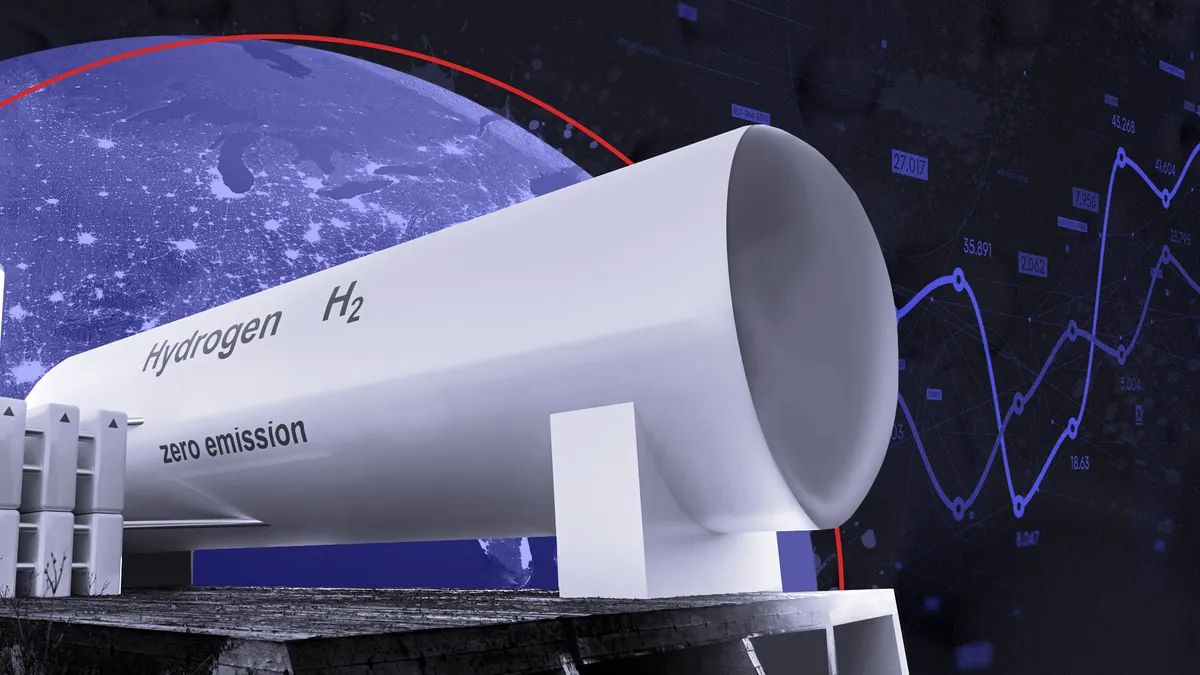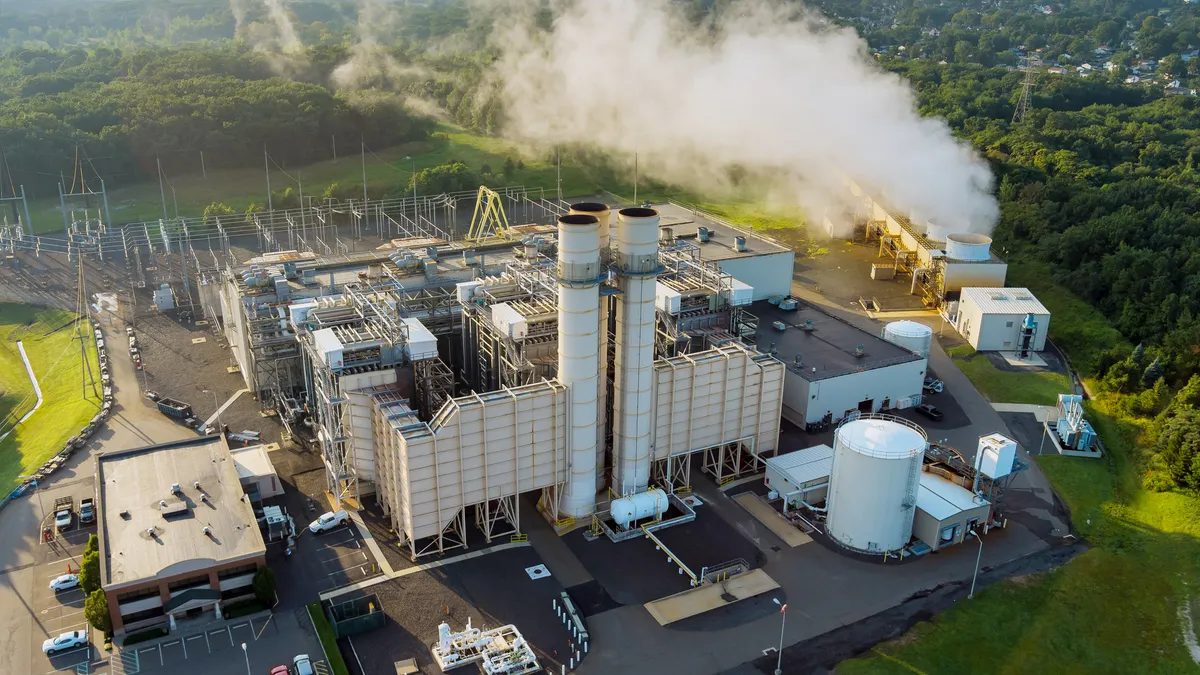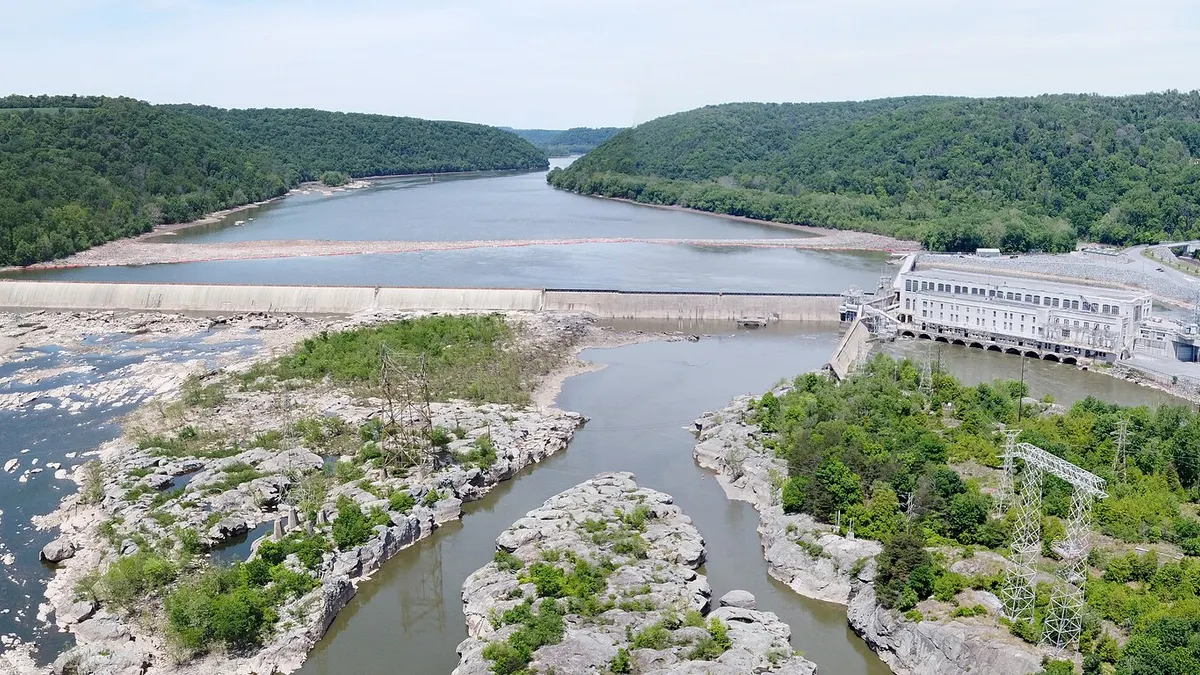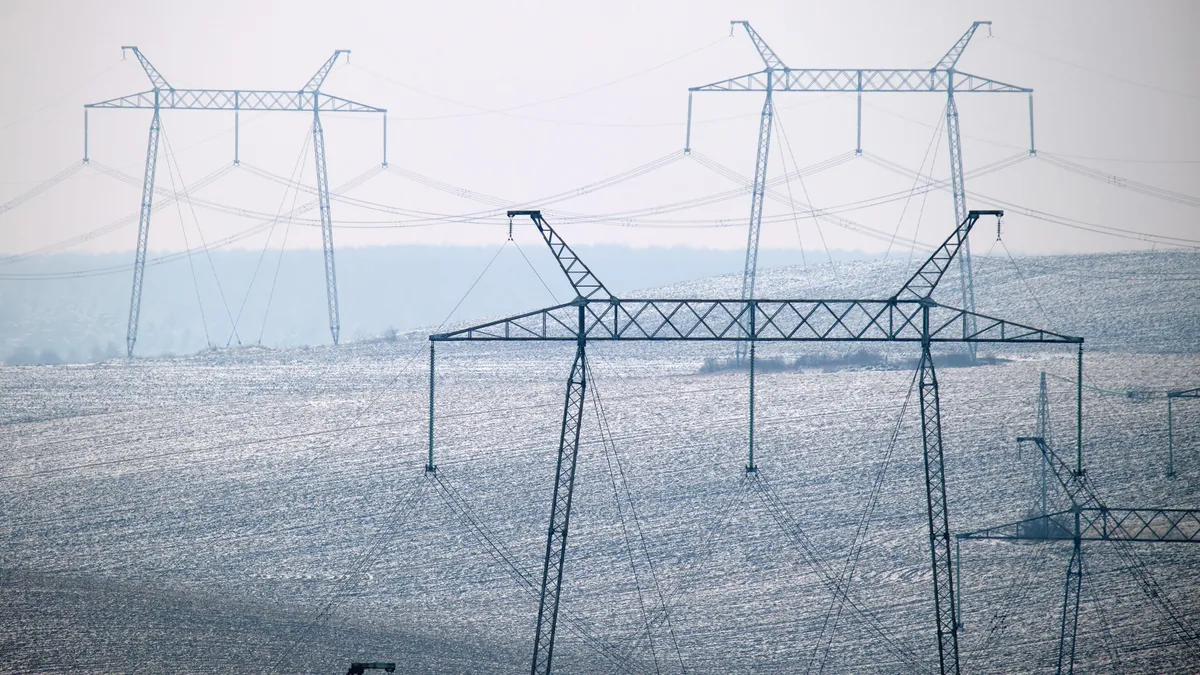This opinion piece is part of a series from Energy Innovation's policy experts on advancing an affordable, resilient and clean energy system.
Gas and electric utilities' interest in hydrogen is growing as a potential pathway to cut greenhouse gas emissions. Hydrogen, like natural gas, is flammable and can be burned for energy, but it doesn't release carbon dioxide during combustion. This makes hydrogen seem like a compelling alternative for gas utilities looking to continue business-as-usual while meeting decarbonization goals or requirements. Since 2020, utilities have submitted at least 26 hydrogen pilot projects for regulatory approval across 15 states.
But new Energy Innovation research demonstrates these proposals carry high risks with little reward. Hydrogen blending would likely raise consumer costs, increase dangerous pollution, and risk public safety, all while minimally reducing emissions. Regulators must proceed with caution when considering hydrogen proposals and weigh them against more viable decarbonization strategies, particularly electrification.
Most hydrogen produced today is derived from an emissions-intensive process using natural gas, nicknamed "gray hydrogen," and is largely used in oil refining and fertilizer production. But a decarbonized economy requires hydrogen to be made through zero-carbon processes. This "green hydrogen" is electrolyzed from water using renewable electricity, with oxygen as the only byproduct. While the process is carbon-free, the fuel still poses significant challenges for cutting emissions.
Hydrogen's different chemical properties compared to natural gas makes complete fuel substitution unrealistic using current natural gas infrastructure and appliances. A 20% hydrogen/80% natural gas mix is the known blending limit before more substantial upgrades are needed, and even that is optimistic absent further research. That blend results in just a 7% cut in emissions compared to 100% natural gas — still at major cost for infrastructure retrofits or replacements.
Given these roadblocks, regulators should exercise skepticism when considering ratepayer-funded proposals to blend hydrogen with natural gas and should place a high burden of proof on utilities to demonstrate how these investments support a safe, viable and cost-effective long-term decarbonization strategy relative to alternatives.
Hydrogen in homes: A laundry list of costs
Hydrogen is an expensive fuel to consider for large-scale use in buildings. Costs in the United States range widely, but green hydrogen is currently six to 14 times more expensive than natural gas. Even a 20% blend of green hydrogen with natural gas could raise the fuel price two to four times compared to 100% natural gas. On top of the initial high cost, utilities would need to upgrade their existing natural gas infrastructure — right down to the pipes in our homes.
Utilities hope to limit upgrade costs based on the premise that much of their existing natural gas infrastructure would need only slight modifications to support the new fuel. Pilot projects therefore aim to understand how much hydrogen can safely be blended with natural gas in existing distribution systems and for use in today's household appliances. However, the extent of upgrades and investments needed to support integration of this fuel is still uncertain.
Depending on each pipeline's age, material and operating pressure, hydrogen can make steel pipes brittle — exacerbating cracks — and leak at much higher volumes than natural gas through plastic pipes. Utilities must test each section of their gas infrastructure to determine the upgrades needed to support even low levels of hydrogen blending, and then go through additional testing and upgrades to accommodate higher blends.
Higher blends or 100% hydrogen fuel would also require swapping all natural gas appliances in homes and buildings to appliances that are compatible with either all or high-blend hydrogen. Such appliances are in early stages of development — the most advanced are only now being prototyped in the United Kingdom.
If they did become broadly available, they would still have efficiency penalties compared to their electric counterparts — directly powering a heat pump for indoor heating would use renewable electricity three to six times more efficiently than using it to electrolyze green hydrogen that is then distributed and burned in a furnace. Even compared with low blends, direct electrification for heating would still be at least two to four times more efficient.
These efficiency losses would translate to higher fuel demand, meaning higher capital expenses for building out renewables and electrolyzers — and all of these costs could show up on ratepayer bills.
Health and safety risks of burning hydrogen in homes
In addition to cost questions, hydrogen's safety challenges have yet to be resolved.
Hydrogen's much greater propensity to ignite poses safety concerns to those working near transmission pipelines that move gas at high pressures, or to households with low ventilation. Compared to natural gas, hydrogen is more prone to leakage due to its small molecular size, and there are currently no known compatible odorants so it's not possible to smell a leak.
Like natural gas, hydrogen releases nitrous oxides (NOx) when burned, but has a higher flame temperature that results in considerably higher NOx emissions. While studies around home hydrogen appliances are limited, studies in industrial settings show a 25% blend of hydrogen with natural gas results in a 92% increase in NOx emissions levels.
Research has linked gas stoves to increased asthma risk, including a 42% increase for children. NOx pollution from gas appliances that gets vented outdoors also damages outdoor air quality. In California, burning natural gas in buildings already releases seven times more NOx pollution than burning the fuel for power generation, resulting in hundreds of premature annual deaths statewide. Cooking or heating with hydrogen blends would likely increase all of these health risks.
A decarbonization pipe dream?
Meanwhile, leaking pipelines could thwart hydrogen's even minor climate benefits as time spent on necessary safety tests and upgrades to secure small emissions reductions delays action on other readily available measures to decarbonize buildings.
Hydrogen itself causes warming through atmospheric reactions, yielding a warming effect that is 5.8 times more potent than CO2 across a 100-year timeframe, so leaks will contribute to warming even if no carbon is produced during combustion. Considering only combustion emissions, hydrogen's lower energy density per volume means a 20% blend only provides 6% to 7% of the mixture's energy content. Therefore, green hydrogen could reduce combustion GHG emissions a maximum of 6% to 7% based on current blending limits.
Electrification for decarbonization, cost efficiency and safety
In contrast, electrification is a proven, cost-effective strategy for reducing building emissions. Electrification is gaining momentum across the U.S. and also holds significant consumer cost and safety advantages over hydrogen use.
The average U.S. household that uses electricity for heating has lower bills compared to homes that heat with natural gas. Almost half of all single-family U.S. homes are already appropriately wired for electric appliances, and those that aren't can upgrade when a new appliance is needed rather than wait for the entire utility service area to switch over to infrastructure that can handle a new fuel.
While high electrification levels will require some grid distribution upgrades, these investments bolster grid reliability and resilience for all electricity users. As buildings and transportation electrification grows, grid upgrade costs will be spread across a larger sales volume, reducing cost impacts and potentially reducing the price per unit of electricity for all ratepayers. The same cannot be said for gas system upgrades, as they would only support existing gas customers without increasing sales volume.
Perhaps most importantly, electric appliances don't carry any of the risks associated with hydrogen fuel leakage and ignition and eliminate indoor NOx pollution since they don't burn fuel.
Green hydrogen may have long-term merit for hard-to-decarbonize end-uses
Green hydrogen may have a role in the power sector to meet the last 10% of decarbonization by way of long-duration storage for renewable electricity. And green hydrogen could replace gray hydrogen uses, particularly in ammonia production for use in fertilizer.
However, when it comes to buildings, policymakers should first consider proven, least-regrets alternatives to achieve their decarbonization targets like electrifying buildings, bolstering energy efficiency programs, directing gas utilities to seal methane leaks, and deploying more renewables and battery storage.






















